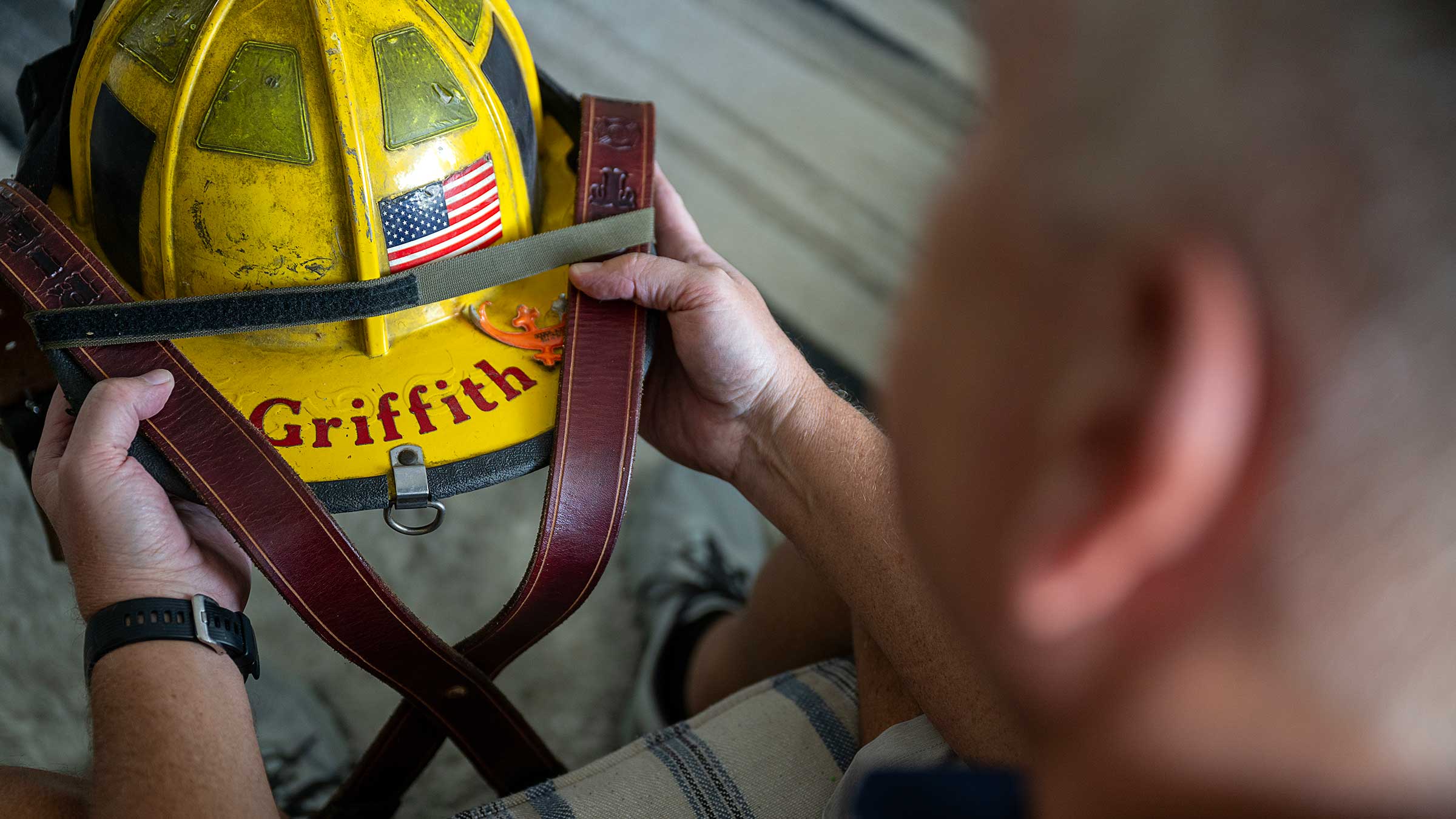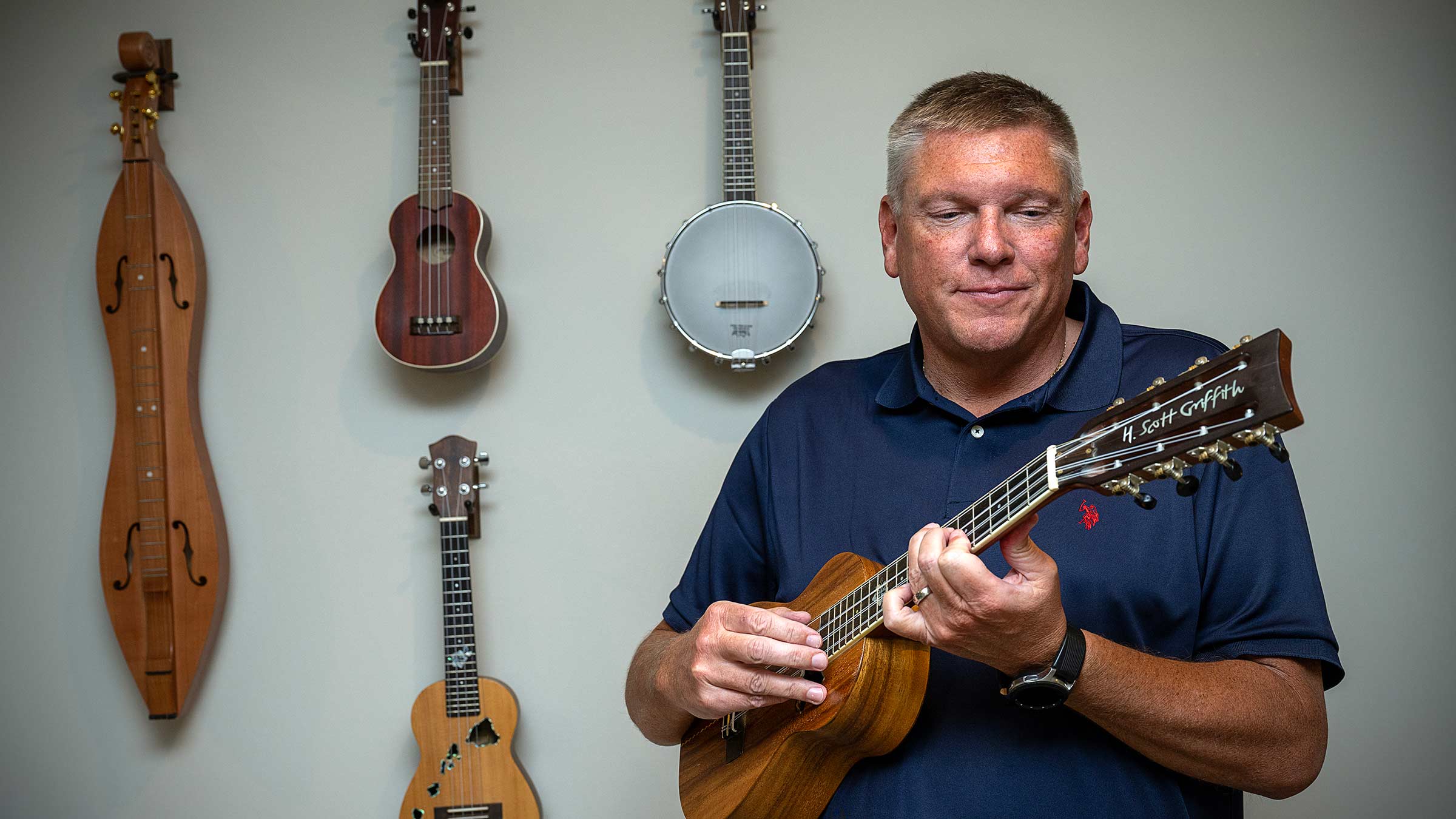Former firefighter’s active life restored by heart transplant
Nearly a decade after his heart transplant, Scott Griffith is enjoying his family and staying busy.
It’s common for a patient to recover from a major medical surgery with a renewed energy — a desire to live life to the fullest.
And although Scott Griffith of Columbus led an incredibly active life before having a heart transplant, he’s lived plenty of meaningful moments in the years since.
A former firefighter, the 55-year-old has been on the ski patrol team at Mad River Mountain in Zanesfield, Ohio, for nearly 30 years. His devotion and expertise in skiing is so advanced that he once rode in a helicopter to the top of a mountain in Jackson Hole, Wyoming, and skied down.
Griffith also once spent a week touring Costa Rica on a motorcycle, and in 2006 he was training for an extreme triathlon — which entails 28.5 miles of mountain biking, whitewater kayaking and running through the mountains of West Virginia.
The onset of heart disease
In the midst of this training, Griffith also worked as a firefighter for the city of Columbus. One day, he inhaled smoke while responding to a fire in Genoa Township. Shortly thereafter, the problems started.

“It made me kind of nauseous,” he recalls. “After that, I thought I had bronchitis. When I would go to the gym, I couldn’t pick the weights up and carry them to the bench without being winded.”
Breathing became so difficult for him that he had to abandon his triathlon training. Doctors began him on a treatment plan for bronchitis or pneumonia, but the problems worsened.
He came to The Ohio State University Heart and Vascular Center, where he would spend a great deal of time. His ejection fraction — the measure of how well the heart pumps blood — was “about 7 or 8%,” he recalls. A healthy figure is between 50 and 70%; anything below 30% is severely abnormal.
“They said that because I was in good physical shape, that’s the only reason I didn’t die then,” Griffith says.
Finding and treating serious heart conditions
He was diagnosed with cardiomyopathy, a disease that limits the heart’s ability to pump blood. The genetic condition can be caused by a number of factors, but no specific cause was identified in his case.
As someone who was used to an active lifestyle, Griffith of course couldn’t sit still while he was hospitalized. He used extended periods while he was admitted to the Ohio State Richard M. Ross Heart Hospital to pick up new hobbies, building radio-controlled cars and learning the ukulele. His home today displays the dozen or so ukuleles he’s collected over the years.
As his condition worsened, he received a pacemaker, and in February 2015, he received a left ventricular assist device (LVAD) to help keep his heart working. Such a device is a last resort for patients who are in heart failure, generally given as a bridge to get them to a transplant.
Scott remembers struggling during that time in his life.
“There were times I prayed I wouldn’t wake up. I was done,” he says.

A heart attack, and a sudden transplant
That October, he had a massive heart attack at home and was rushed back to the hospital after medics had to shock him 15 times. He was in the process of getting on the transplant list, but because of the severity of this episode, he was elevated to top status.
About 10 days later, he received word that a donor heart was ready for him. He received his new heart on Oct. 14, 2015, and the results were obvious right away.
“Within 24 hours, I was up and walking. I left the hospital eight days after surgery, and three months later, I skied,” Griffith says.
“The Ross is a great place,” he says. “I believe I got the best care, and I believe I was in the best place to try and get healthy.”
In the years since, he’s become an avid cyclist, riding about 25 miles a day. He marks the anniversary of his heart transplant each year with a vacation, and although he’s no longer on his motorcycle, he’s in the market for a convertible.
He’s also been able to have invaluable time with his family.

“I have my husband back,” says his wife, Krisi. “To have him be here to be with our family, and to see our kids graduate and get married and hopefully have grandchildren in the near future, it’s incredible.”
Scott knows it’s all possible because of the lifesaving treatment he received.
“Ohio State kept me alive,” he says.






